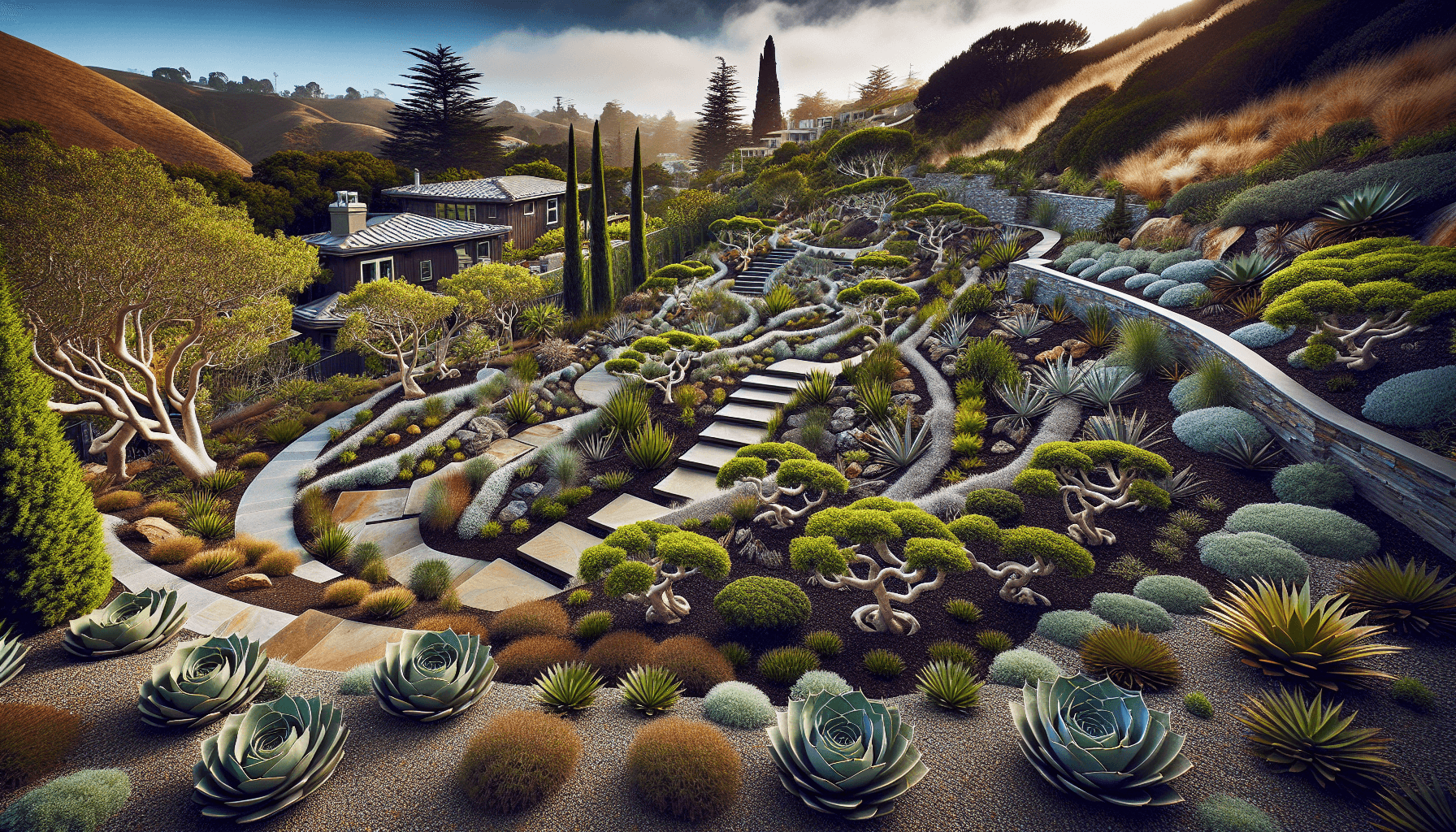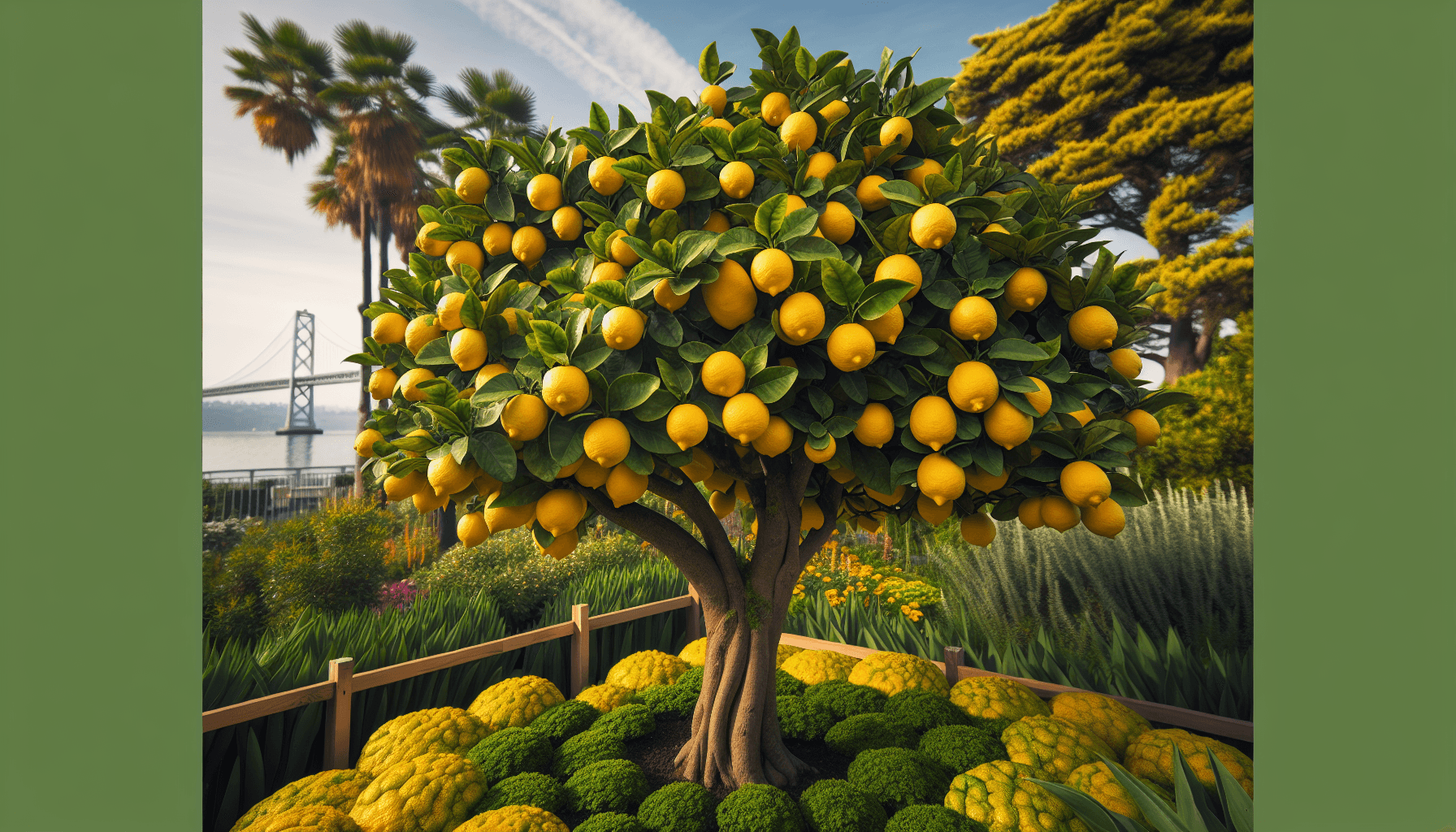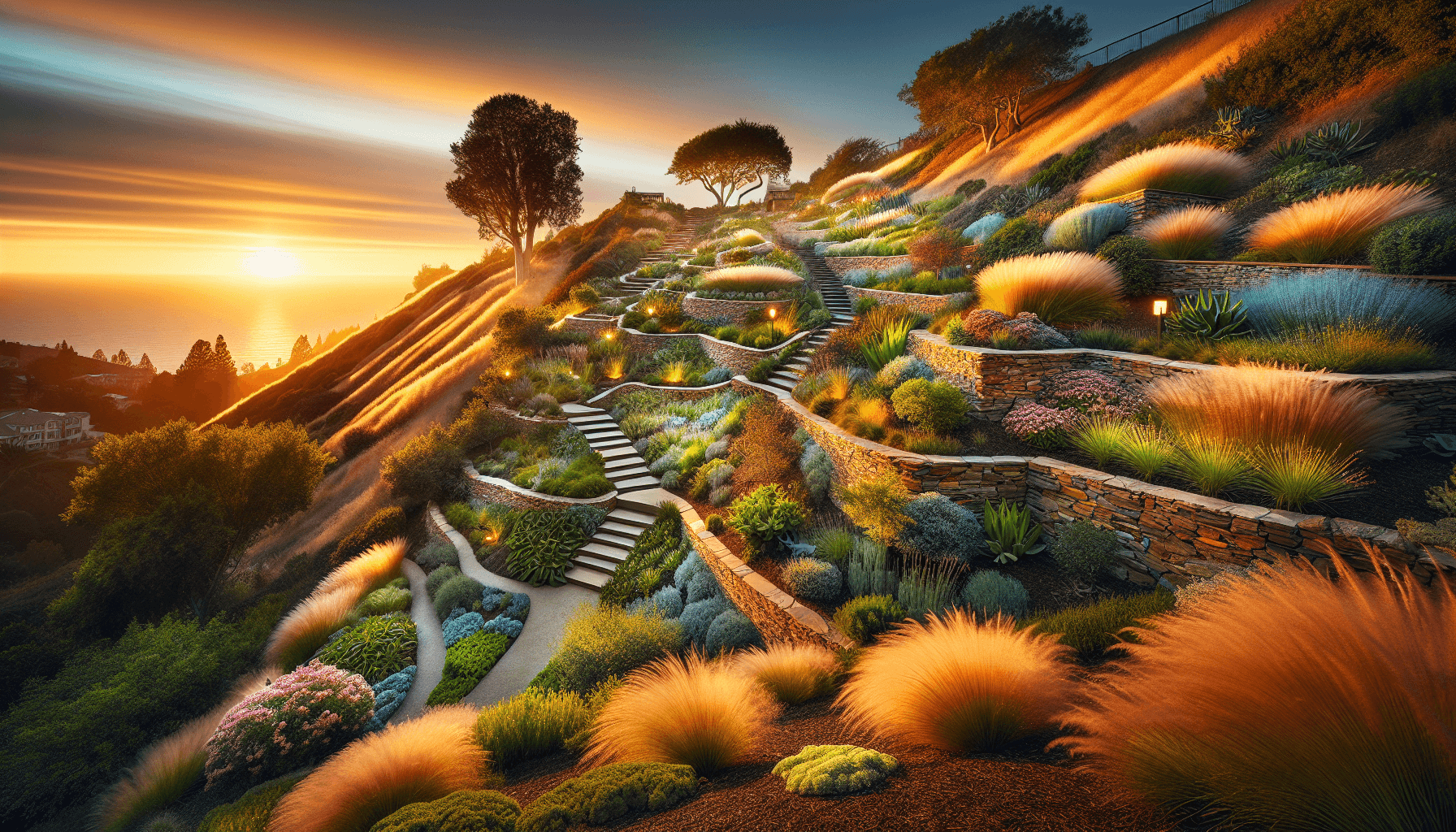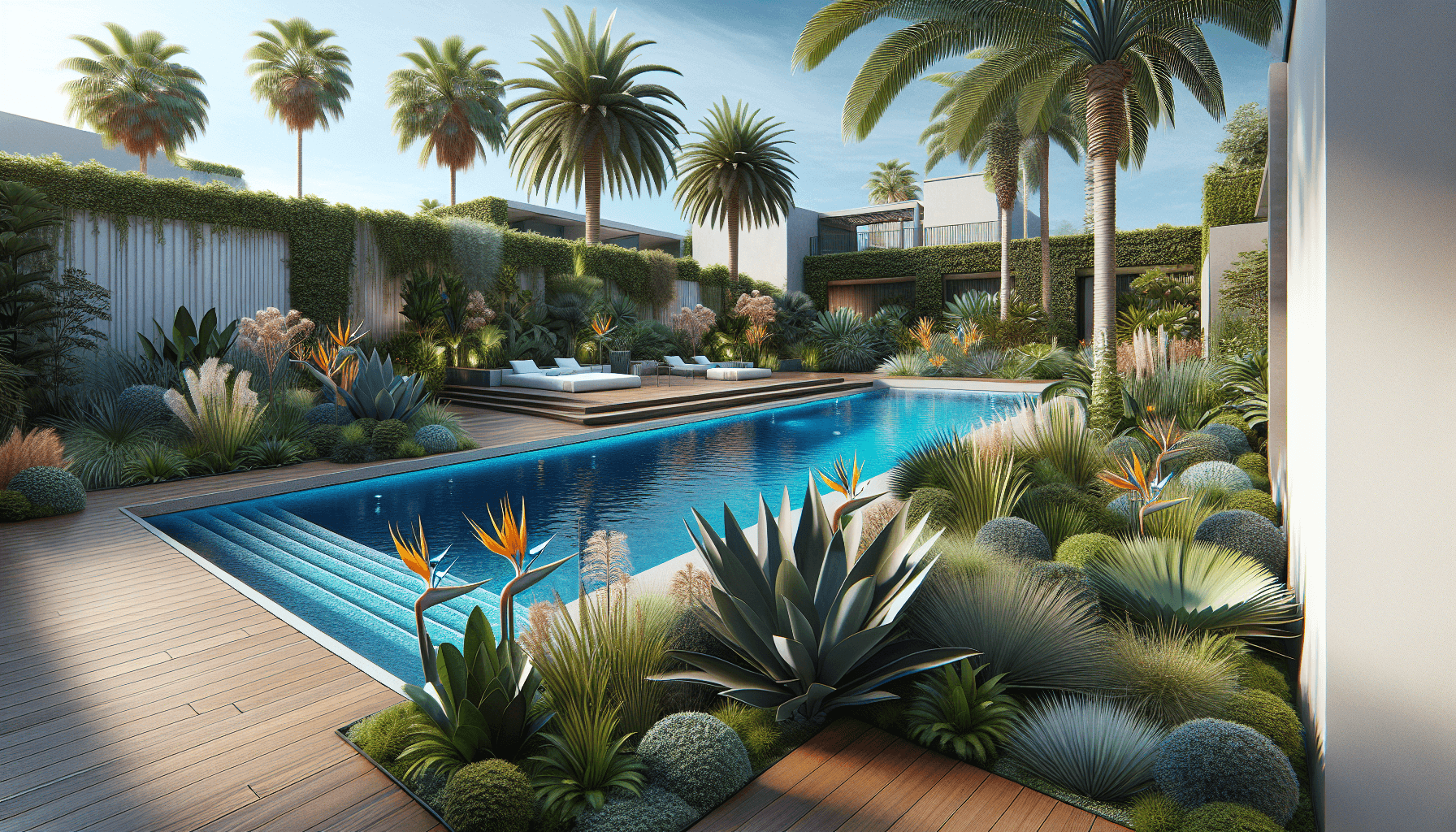As wildfire season extends year-round in California, creating a fire-smart landscape isn't just about compliance—it's about designing a beautiful, protective shield around your home. Defensible space landscaping combines sophisticated design principles with proven fire-safety strategies to create gardens that are both stunning and potentially lifesaving.
A fire-smart garden doesn't mean living in a gravel wasteland. It means embracing a modern aesthetic that celebrates drought-tolerant plants, thoughtful spacing, and architectural hardscaping while dramatically reducing your home's fire risk. Let's explore how to design a landscape that protects what matters most.
Understanding Defensible Space Zones
California regulations require defensible space around all homes in wildfire-prone areas. These zones aren't arbitrary—they're based on decades of fire behavior research and create a blueprint for both beauty and safety:
- Zone 0 (0-5 feet from structures) - The ember-resistant zone requiring hardscaping and non-combustible materials
- Zone 1 (5-30 feet from structures) - The lean, clean, and green zone with well-spaced, low-fuel plants
- Zone 2 (30-100 feet from structures) - The reduced fuel zone with strategic thinning and maintenance
- Proper plant spacing - Creates fire breaks while highlighting each plant's individual beauty
These zones create design parameters that actually make planning easier, not harder. Think of them as guidelines that prevent overcrowding, add architectural interest through hardscaping, and favor sustainable plant selections.
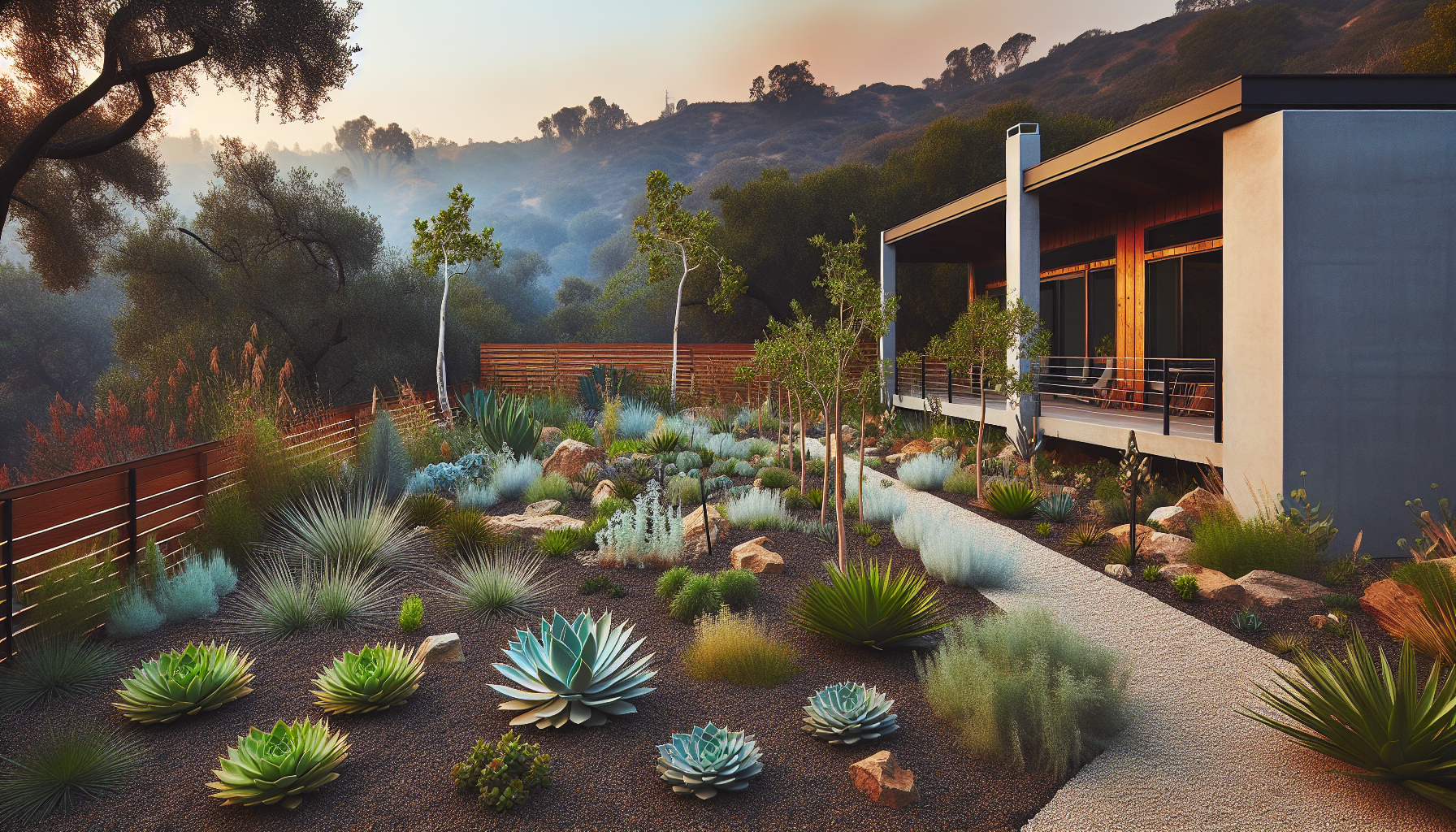
Well-designed defensible space zones create a protective buffer while maintaining aesthetic appeal
Zone 0: The Ember-Resistant Foundation
Creating Your Home's First Line of Defense
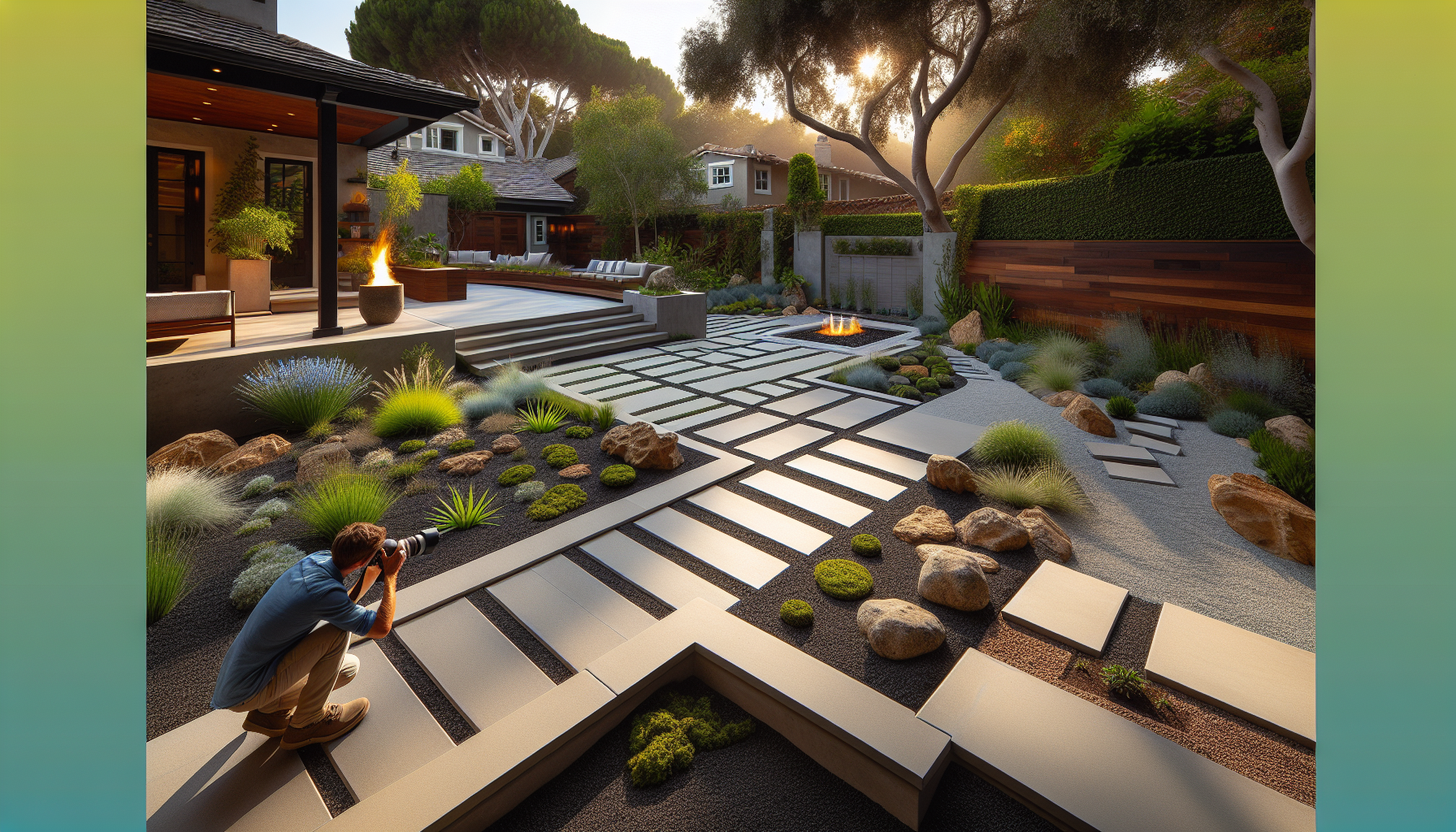
Elegant stone pathways create ember-resistant zones near structures

Gravel mulch provides fire protection and modern aesthetic appeal
Design Opportunities in Zone 0
Hardscaping Excellence
Think of Zone 0 as your home's jewelry—minimal, precious, perfectly curated. Use oversized pavers (24" or larger) for dramatic scale, mix materials like steel with stone or concrete with glass mulch, and add color through powder-coated metal planters rather than combustible plants.
Modern Rock Gardens
Create sophisticated compositions with decomposed granite, specimen boulders, and architectural elements. Layer different sizes of rock—boulders, cobbles, and pea gravel—for visual depth while maintaining complete fire resistance.
Metal Planters & Containers
Corten steel planters with rusted patina echo California's golden hills while being completely fireproof. Use them for specimen agaves or succulents that can be removed during high fire danger periods.
Strategic Lighting
Install uplighting in hardscaping for nighttime drama. LED fixtures in steel or concrete add visual interest without compromising safety.
Zone 1: Fire-Smart Plant Selection
Succulent Sculpture Gardens
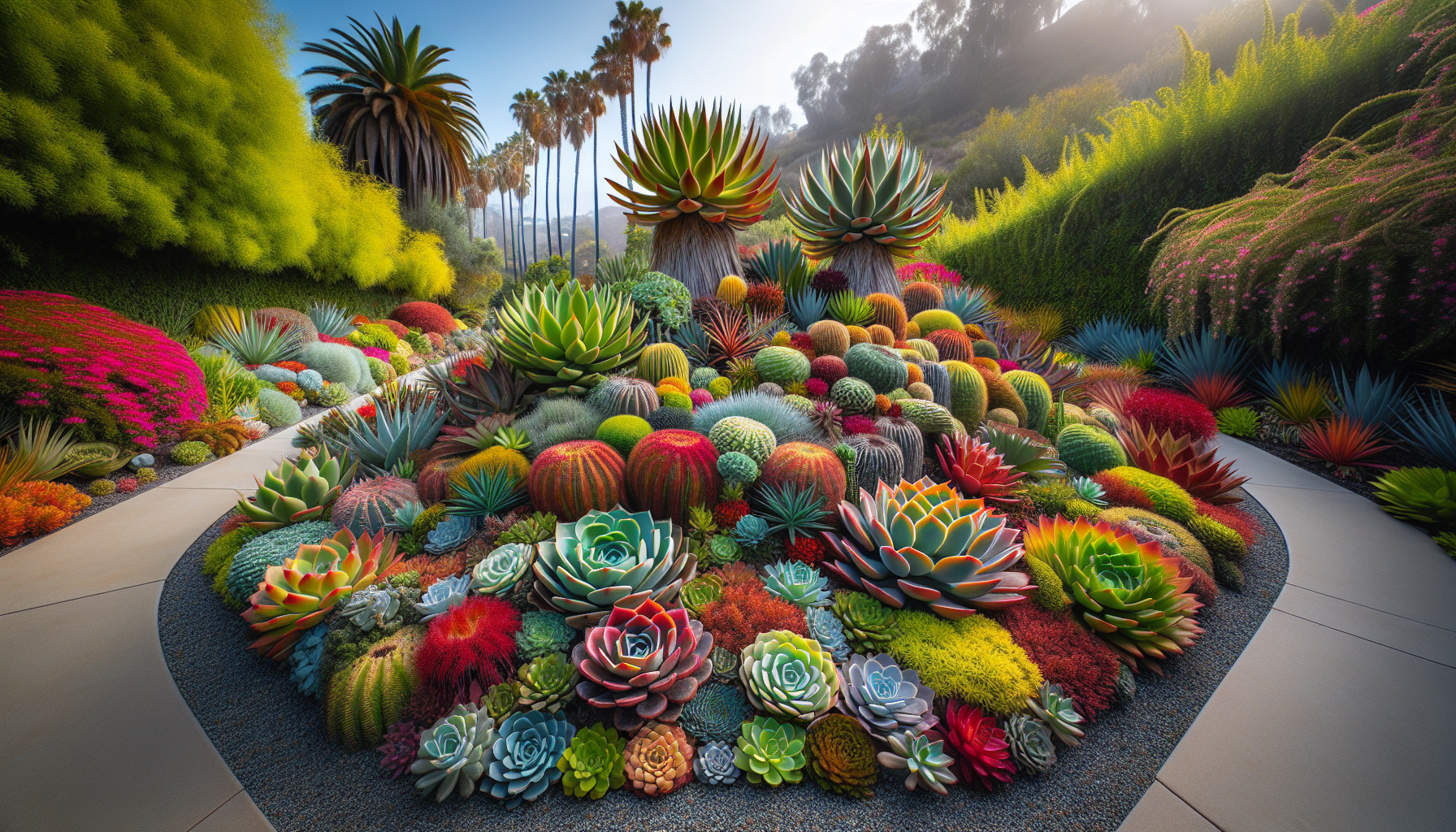
Architectural succulents create year-round interest with minimal fire risk
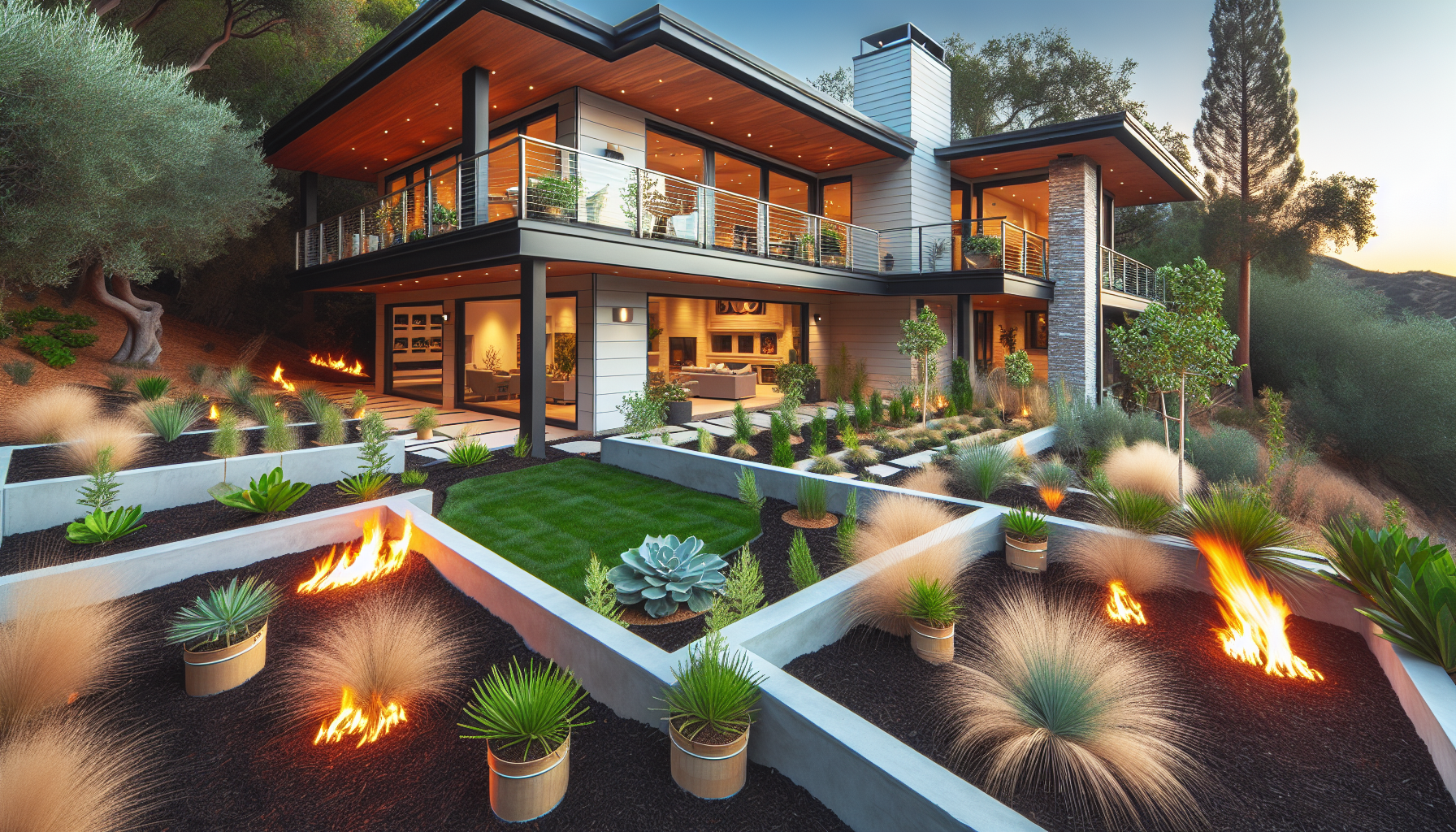
Maintained spacing prevents fire ladders while showcasing each plant
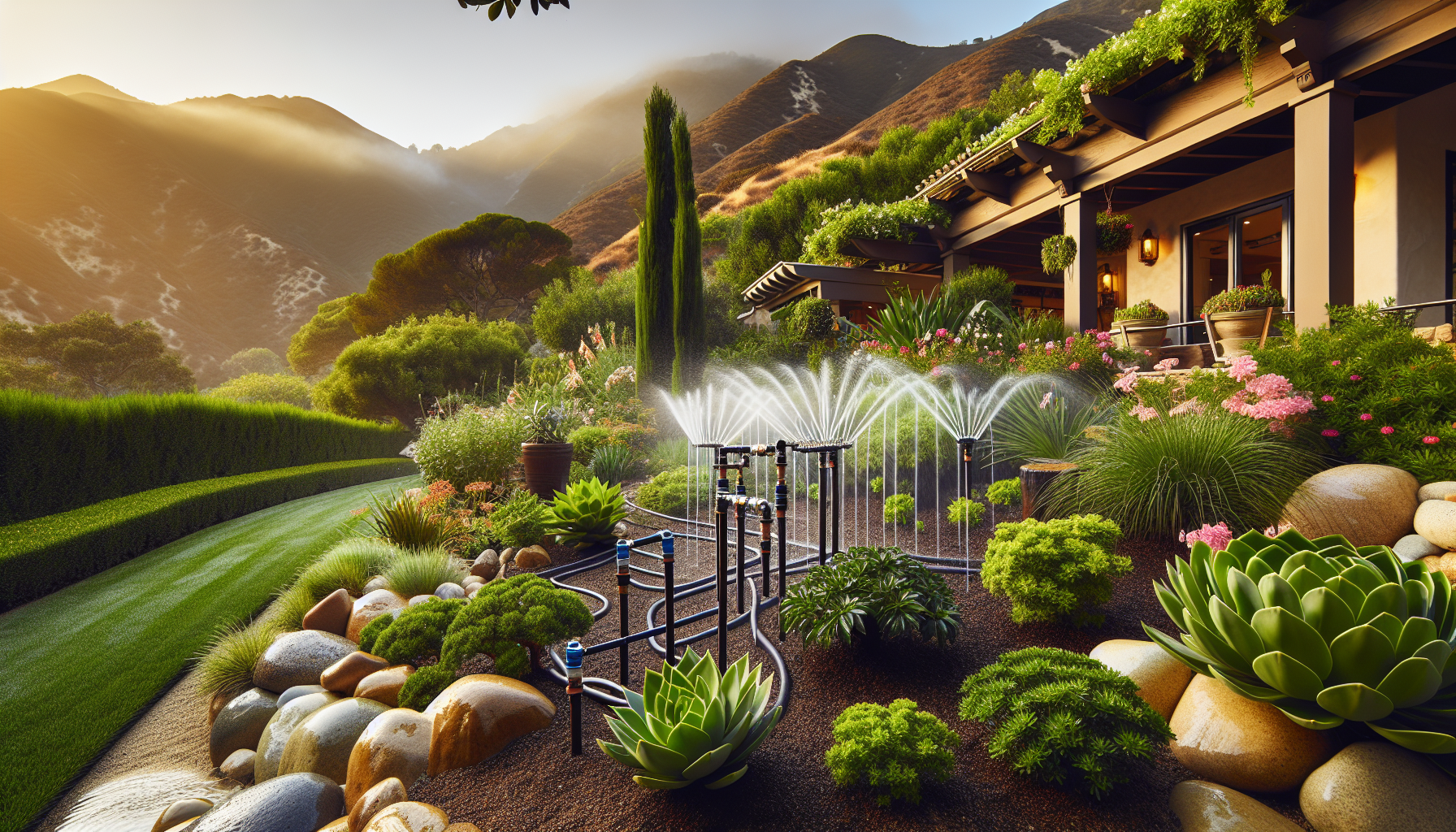
Efficient irrigation keeps plants hydrated and fire-resistant
High-Moisture, Low-Fuel Plants
Agaves (Agave species)
Sculptural rosettes with high water content. 'Blue Flame' and 'Blue Glow' varieties offer stunning color.
Aloe (Aloe species)
Succulent leaves and vibrant flower spikes. Tree aloes like 'Hercules' provide dramatic focal points.
Sedum & Sempervivum
Low-growing, mat-forming succulents perfect for groundcover. Hundreds of varieties available.
Dudleya (Dudleya brittonii)
California native succulents with silver rosettes that glow in moonlight. Extremely drought-tolerant.
Ice Plant (Delosperma)
Fire-resistant groundcover with brilliant flowers. Modern varieties offer improved cold tolerance.
Aeonium (Aeonium species)
Architectural rosettes in green, burgundy, and variegated forms. Excellent for containers.
Fire-Resistant Shrubs & Perennials
Low-Fuel Shrubs
- Rock Rose (Cistus) - Papery spring flowers, minimal fuel load
- African Iris (Dietes) - Delicate blooms, tough evergreen foliage
- Society Garlic (Tulbaghia) - Purple blooms all summer, low fire risk
- Little Ollie Olive - Compact dwarf olive, naturally fire-resistant
- Westringia 'Morning Light' - Variegated rosemary look-alike
Hydrated Perennials
- Coral Bells (Heuchera) - Colorful foliage, low fuel load
- Monkey Flower (Mimulus) - California native with high moisture content
- Beach Strawberry (Fragaria chiloensis) - Native groundcover, stays green
- Yarrow (Achillea) - Flat-topped flowers, ferny foliage
- Dymondia margaretae - Silver-green mat, extremely fire-resistant
Trees for Fire-Smart Landscapes
Trees provide essential shade and structure but must be properly pruned and maintained. Look for species with high moisture content, minimal resin, and leaves that decompose quickly rather than accumulating as fuel.
Olive Trees (Olea europaea)
Naturally fire-resistant with high water content in leaves. Prune to maintain high canopy and remove lower branches. Fruitless varieties like 'Swan Hill' reduce maintenance.
Strawberry Tree (Arbutus 'Marina')
Evergreen with cinnamon-colored bark, low resin content, and naturally retained moisture. Multi-season interest with flowers and fruit.
Chinese Pistache (Pistacia chinensis)
Deciduous tree with spectacular fall color. Leaves decompose quickly and won't accumulate as fuel. Extremely drought-tolerant once established.
Palo Verde (Parkinsonia)
Green bark with minimal leaves reduces fuel load. Desert native requiring almost no water. Provides dappled shade perfect for understory plantings.
Fire-Smart Design Principles
Create Strategic Spacing
Proper spacing is the most critical element of fire-smart design. Plant in islands separated by hardscaping or non-combustible groundcovers. This prevents fire from spreading between plants while allowing each specimen to shine as a sculptural element. Think "edited abundance" rather than dense plantings.
Eliminate Fuel Ladders
Fuel ladders occur when vegetation at different heights allows fire to climb from ground level to tree canopies. Maintain vertical separation by removing lower tree branches (limbing up at least 6-10 feet), spacing shrubs away from trees, and using low groundcovers rather than mid-height plantings beneath trees.
Embrace Hardscaping
Decomposed granite pathways, flagstone patios, gravel gardens, and steel pergolas add architectural interest while creating fire breaks. These elements aren't compromises—they're opportunities to add structure, define spaces, and create visual focal points that anchor your design.
Maintain Vigilantly
Fire-smart landscaping is year-round work, not a seasonal task. Weekly removal of dead material during fire season, proper irrigation to maintain plant moisture, meticulous clearing of Zone 0, and regular pruning to maintain spacing are essential. Create a maintenance calendar and stick to it.
Smart Irrigation for Fire Resistance
Well-hydrated plants are more fire-resistant than dry ones. Strategic irrigation isn't about wasteful watering—it's about delivering the right amount of water to keep plants healthy and maintain their natural moisture content, especially during high-risk fire season.
Drip Irrigation Systems
Drip irrigation delivers water directly to root zones, minimizing waste while maximizing plant health. Install separate zones for different water needs—deep, infrequent watering for established drought-tolerant plants, and more frequent irrigation for hydrated oasis areas in Zone 1.
Smart Controllers
Modern irrigation controllers adjust automatically for weather conditions and can increase watering during red flag warnings when plant moisture is most critical. Some systems integrate with local fire weather alerts to boost irrigation before high-risk periods.
Seasonal Adjustments
- Spring: Moderate watering as plants actively grow
- Summer/Fall: Increase frequency during peak fire season to maintain plant moisture
- Winter: Reduce irrigation during rainy season, maintain only in dry periods
- Fire Warnings: Boost irrigation 24-48 hours before predicted high-risk events
Year-Round Maintenance Calendar
Seasonal Tasks
Spring (March-May): The Refresh
Cut back ornamental grasses before new growth. Prune spring bloomers after flowering. Refresh gravel mulch where needed. Check irrigation systems for proper function. Remove accumulated dead material from winter.
Summer (June-August): The Vigilance
Weekly removal of dead material becomes critical. Monitor irrigation to ensure plants stay hydrated. Keep Zone 0 meticulously clear of all combustibles. Maintain proper separation between plant islands. Remove annual grasses before they dry completely.
Fall (September-November): Peak Fire Season
Maximum vigilance required. Remove all leaf litter, especially from roofs and gutters. Ensure full 100 feet of defensible space is maintained. During red flag warnings, consider removing outdoor cushions, door mats, and potted plants near structures.
Winter (December-February): The Planning Season
Major pruning while plants are dormant. Tree limbing and thinning to eliminate fuel ladders. Hardscaping repairs and improvements. Plan and plant for the coming year. Update your fire safety evacuation plan.
Common Mistakes to Avoid
Believing "Native Means Fire-Safe"
Many California natives are highly flammable, including rosemary, sage, and chamise. Choose natives wisely based on fire-resistance qualities, not just native status. Maintain them properly with adequate spacing and regular pruning.
Over-Irrigation Leading to Excess Growth
Too much water creates lush growth that becomes dangerous fuel when it inevitably dries. Smart watering keeps plants healthy and hydrated, not overgrown. Deep, infrequent watering encourages strong roots without promoting excessive foliage.
Creating Heat Island Hardscapes
While hardscaping is essential, too much creates uncomfortable heat islands and barren appearance. Balance is key—strategic placement of non-combustibles mixed with properly spaced fire-resistant plants creates both beauty and safety.
Waiting Until Fire Season
Fire-smart landscaping requires year-round commitment. Waiting until September to address defensible space is too late. Establish maintenance routines in winter and spring, maintain vigilance through summer and fall.
Your Fire-Smart Action Plan
Creating Your Defensible Space
-
1.
Assess Your Risk
Understand your property's fire risk level. Consider slope, prevailing winds, surrounding vegetation, and proximity to wildlands. Get a professional fire-safety assessment.
-
2.
Map Your Zones
Create a property map showing Zone 0 (0-5 feet), Zone 1 (5-30 feet), and Zone 2 (30-100 feet) around all structures. This becomes your design blueprint.
-
3.
Clear Zone 0 Immediately
Remove all combustible materials from 0-5 feet of structures. This is your most critical zone and can be completed in a weekend with immediate safety benefits.
-
4.
Implement Strategic Plant Removal
Remove high-fire-risk plants gradually, starting with those closest to structures. Replace with fire-resistant alternatives using proper spacing principles.
-
5.
Establish Maintenance Routines
Create a year-round calendar for pruning, debris removal, irrigation adjustments, and seasonal tasks. Consistency is the key to long-term fire safety.
-
6.
Document for Insurance
Photograph your improvements, keep receipts for materials and professional work, and consider certification for insurance discounts and peace of mind.
The Investment Perspective
Fire-smart landscaping delivers returns that go far beyond fire safety, making it one of the smartest investments a California homeowner can make:
Financial Benefits
- Insurance Savings: 5-20% discounts for certified defensible space
- Increased Property Value: Faster sales and higher prices in fire-prone areas
- Water Savings: 50-70% reduction in water use compared to traditional landscapes
- Reduced Maintenance: 30-40% lower annual landscape maintenance costs
Lifestyle Benefits
- Peace of Mind: Sleep better knowing you've done everything possible
- Aesthetic Appeal: Modern, sophisticated design that's conversation-worthy
- Environmental Impact: Sustainable gardens that work with California's climate
- Community Safety: Your defensible space helps protect neighbors too
Fire-smart landscaping represents a new California aesthetic—one that's honest about our environment while celebrating beauty. The spaced plantings create sculptural moments. The hardscaping adds architectural interest. The plant palette introduces textures and forms that traditional gardens never explored.
Your garden can be a sanctuary AND a safeguard. It can be water-wise AND wonderful. Most importantly, it can protect what you love while celebrating where you live. In California's new reality, the most beautiful garden is one that endures—and that starts with smart, fire-resistant design.
